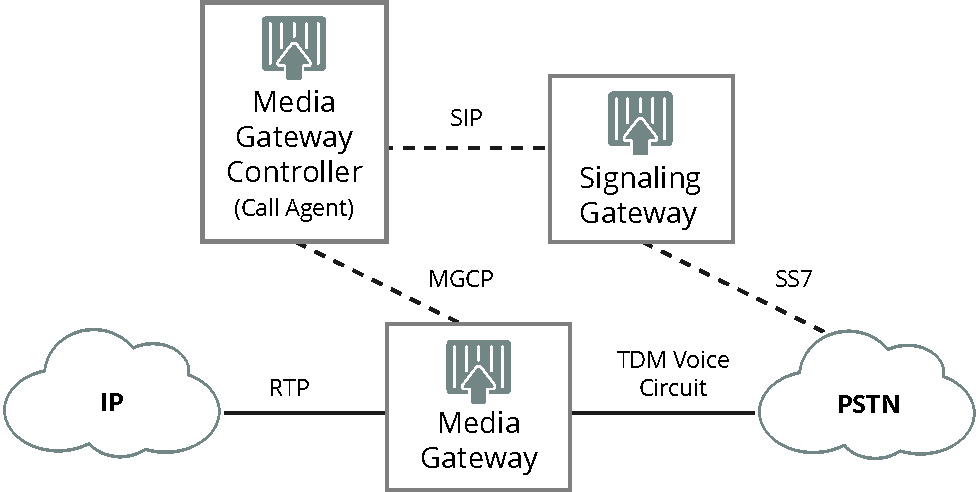A softswitch provides call control intelligence for establishing, maintaining, routing and terminating sessions in Voice over IP (VoIP) networks. Softswitches were originally employed by service providers as part of next-generation IP network initiatives. As the name implies, a softswitch is a software-based solution that runs on industry-standard hardware. Softswitch implementations offer inherent economic advantages over legacy monolithic telephony equipment based on proprietary hardware.
What is a Softswitch: System Architecture
A softswitch is a general telecommunications industry construct. There are no industry specifications governing the implementation of a softswitch. The figure below depicts a general softswitch system architecture.

In a typical softswitch implementation, the control plane is decoupled from the transport plane and the system is decomposed into three distinct functional elements: a signaling gateway, a media gateway and media gateway controller.
The signaling gateway interworks IP signaling protocols such as SIP (session initiation protocol) and H.323 with legacy SS7 (signaling system 7) protocols employed in the PSTN.
The media gateway terminates TDM circuits and packetizes the media streams for IP transport using protocols such as RTP (real-time transport protocol) or SRTP (secure RTP).
The media gateway controller instructs the media gateway, media servers and application servers (not shown) to set up and tear down calls, play recorded messages, and perform application functions like call forwarding, or call waiting. A media gateway controller is also referred to as a softswitch, call agent or call controller.
Session Border Controllers
Service providers typically deploy session border controllers (SBCs) to protect and control communications flows in softswitch implementations. SBCs manipulate IP communications signaling and media streams to protect against denial of service attacks and other security threats, to mitigate multivendor interoperability or multiprotocol interoperability issues, to enforce quality of service (QoS) policies or to route sessions to ensure high availability.
Class 4 Softswitch vs Class 5 Softswitch
Softswitches are sometimes categorized as Class 4 or Class 5 softswitches. Class 4 softswitches are used to route calls between carriers or over long distances. For example, in a VoIP trunking application the Class 4 switch sits at the intersection of the local PSTN network and the long-haul IP backbone network. Class 5 softswitches are used in the access network, for example to interface TDM access lines to a local carrier’s VoIP network.
Relationship to IP Multimedia Subsystem (IMS) Network Architectures
IP Multimedia Subsystem (IMS) is a standards-based architectural framework for multimedia communications services such as voice, video and text messaging over IP networks. The IMS specifications were originally created by the 3rd Generation Partnership Project (3GPP) to standardize the implementation of next-generation mobile networks. IMS brings all the benefits of the IP softswitch concept to mobile network operators.
The IMS architecture decomposes the network into a distinct application, control and transport layers with standardized interfaces to promote scalability, flexibility, and extensibility. Many softswitch vendors extended or repurposed their solutions to support the IMS framework. Service providers can protect and extend investments, contain CAPEX and OPEX, and simplify network migrations (avoid forklift upgrades) by leveraging common network elements such as media gateways and call controllers for NGN and IMS implementations.

